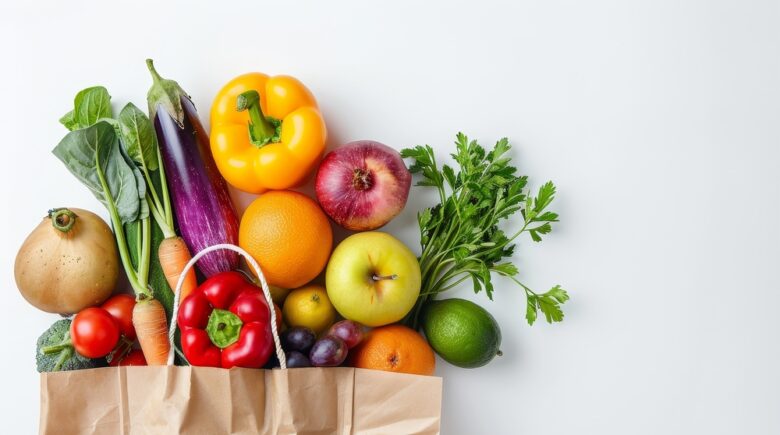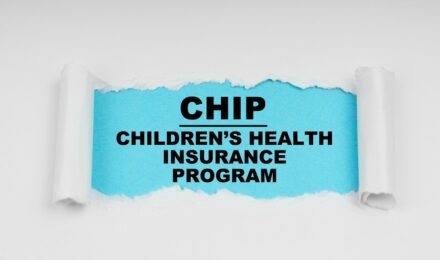Contents
If you are struggling financially, that does not mean you must sacrifice nutrition. Ensuring access to nutritious food remains a priority for everyone, regardless of their financial situation, and fortunately the government agrees. As such, there are a myriad of food assistance programs that you can take advantage of if you find yourself in need of some help. This article explores practical strategies and resources available to support healthy eating on a tight budget.
Understanding Food Assistance Programs
Food assistance programs play a crucial role in helping individuals and families access nutritious food. Programs such as the Supplemental Nutrition Assistance Program (SNAP) and the Special Supplemental Nutrition Program for Women, Infants, and Children (WIC) provide targeted support to those in need. These programs aim to reduce food insecurity and improve dietary intake by offering financial assistance for purchasing groceries. [1]
Outside of these government-based agencies, there ae also local, privately run groups offering assistance. Thinks of locations like food banks and shelters run by churches or other not-for-profit, volunteer-based organizations. The point is, there is a rainbow of options available to you.
How to Qualify and Apply for Benefits
Understanding the eligibility criteria is essential to qualifying for food assistance programs. Each program has specific income guidelines, household size considerations, and other requirements. Applicants need to gather necessary documentation, such as proof of income, residency, and identification, before completing the application process. Local social services offices and online portals offer guidance and support for applicants. [2]
If you feel strongly that you qualify but are facing barriers to apply, such as no access to a computer or the internet, there are still other options available to you. You might consider visiting your local library, where you can typically find computers available to use. Or spots like social services offices will likely have workers on hand who can walk you through applying for help.
Maximizing Your Food Budget
You can ensure that financial resources cover your nutritional needs adequately by using effective budgeting. Planning meals, creating shopping lists, and taking advantage of sales and discounts help stretch the food budget. Prioritizing whole, unprocessed foods, buying in bulk, and opting for generic brands can also result in significant savings. Additionally, using coupons and loyalty programs can further reduce grocery costs.
Some good tips would be focusing on nutrient dense foods, like protein-based ingredients that you can purchase in bulk. Think things like beans, eggs, and ground meats. And don’t be afraid to consider new strategies like making your own bread or tortillas, which can often taste better than the store bought versions! Eating healthily on a budget requires careful planning and smart choices. Selecting nutrient-dense foods, such as fruits, vegetables, whole grains, and lean proteins, ensures a balanced diet without overspending. Preparing meals at home reduces the reliance on expensive convenience foods. Utilizing seasonal produce and preserving food through freezing or canning extends the lifespan of fresh ingredients.
Community Resources and Food Banks
Community resources, including food banks and pantries, offer vital support to those experiencing financial hardship. These organizations distribute donated food items to individuals and families in need. Volunteering at or participating in local food programs not only provides access to nutritious food but also fosters a sense of community and solidarity. Many food banks also offer educational programs on nutrition and cooking.
If you are unsure where to find a local food bank, it could be worth a call or visit to public institutions like schools, libraries, fire departments or even police stations. There will be someone on hand who can point you in the right direction and make sure you get the help you need.
Additional Support for Families and Special Groups
Certain groups, including children, seniors, and individuals with specific dietary needs, require additional support. Programs like the National School Lunch Program (NSLP) [3] and the Child and Adult Care Food Program (CACFP) [4] provide nutritious meals to children in schools and daycare centers. Senior nutrition programs offer meal delivery and communal dining options for older adults. Tailored food assistance addresses the unique needs of these special groups.
If you fall into one of these special groups, one of the benefits is that these services can be provided in an ongoing basis. Knowing that you will be receiving help on a more or less permanent basis adds a level of stability.
Conclusion
Access to nutritious food remains a fundamental right, regardless of financial circumstances. Individuals and families can maintain a healthy diet even on a limited budget by utilizing available resources, planning effectively, and making informed choices. Community support and targeted food assistance programs play pivotal roles in ensuring that no one goes hungry or lacks essential nutrients.
Resources:
- Learn About SNAP Vs. WIC | wicassistance.org
- WIC Eligibility Requirements | Food and Nutrition Service
- National School Lunch Program | Food and Nutrition Service
- Child and Adult Care Food Program | Food and Nutrition Service
Contents
If you are struggling financially, that does not mean you must sacrifice nutrition. Ensuring access to nutritious food remains a priority for everyone, regardless of their financial situation, and fortunately the government agrees. As such, there are a myriad of food assistance programs that you can take advantage of if you find yourself in need of some help. This article explores practical strategies and resources available to support healthy eating on a tight budget.
Understanding Food Assistance Programs
Food assistance programs play a crucial role in helping individuals and families access nutritious food. Programs such as the Supplemental Nutrition Assistance Program (SNAP) and the Special Supplemental Nutrition Program for Women, Infants, and Children (WIC) provide targeted support to those in need. These programs aim to reduce food insecurity and improve dietary intake by offering financial assistance for purchasing groceries. [1]
Outside of these government-based agencies, there ae also local, privately run groups offering assistance. Thinks of locations like food banks and shelters run by churches or other not-for-profit, volunteer-based organizations. The point is, there is a rainbow of options available to you.
How to Qualify and Apply for Benefits
Understanding the eligibility criteria is essential to qualifying for food assistance programs. Each program has specific income guidelines, household size considerations, and other requirements. Applicants need to gather necessary documentation, such as proof of income, residency, and identification, before completing the application process. Local social services offices and online portals offer guidance and support for applicants. [2]
If you feel strongly that you qualify but are facing barriers to apply, such as no access to a computer or the internet, there are still other options available to you. You might consider visiting your local library, where you can typically find computers available to use. Or spots like social services offices will likely have workers on hand who can walk you through applying for help.
Maximizing Your Food Budget
You can ensure that financial resources cover your nutritional needs adequately by using effective budgeting. Planning meals, creating shopping lists, and taking advantage of sales and discounts help stretch the food budget. Prioritizing whole, unprocessed foods, buying in bulk, and opting for generic brands can also result in significant savings. Additionally, using coupons and loyalty programs can further reduce grocery costs.
Some good tips would be focusing on nutrient dense foods, like protein-based ingredients that you can purchase in bulk. Think things like beans, eggs, and ground meats. And don’t be afraid to consider new strategies like making your own bread or tortillas, which can often taste better than the store bought versions! Eating healthily on a budget requires careful planning and smart choices. Selecting nutrient-dense foods, such as fruits, vegetables, whole grains, and lean proteins, ensures a balanced diet without overspending. Preparing meals at home reduces the reliance on expensive convenience foods. Utilizing seasonal produce and preserving food through freezing or canning extends the lifespan of fresh ingredients.
Community Resources and Food Banks
Community resources, including food banks and pantries, offer vital support to those experiencing financial hardship. These organizations distribute donated food items to individuals and families in need. Volunteering at or participating in local food programs not only provides access to nutritious food but also fosters a sense of community and solidarity. Many food banks also offer educational programs on nutrition and cooking.
If you are unsure where to find a local food bank, it could be worth a call or visit to public institutions like schools, libraries, fire departments or even police stations. There will be someone on hand who can point you in the right direction and make sure you get the help you need.
Additional Support for Families and Special Groups
Certain groups, including children, seniors, and individuals with specific dietary needs, require additional support. Programs like the National School Lunch Program (NSLP) [3] and the Child and Adult Care Food Program (CACFP) [4] provide nutritious meals to children in schools and daycare centers. Senior nutrition programs offer meal delivery and communal dining options for older adults. Tailored food assistance addresses the unique needs of these special groups.
If you fall into one of these special groups, one of the benefits is that these services can be provided in an ongoing basis. Knowing that you will be receiving help on a more or less permanent basis adds a level of stability.
Conclusion
Access to nutritious food remains a fundamental right, regardless of financial circumstances. Individuals and families can maintain a healthy diet even on a limited budget by utilizing available resources, planning effectively, and making informed choices. Community support and targeted food assistance programs play pivotal roles in ensuring that no one goes hungry or lacks essential nutrients.
Resources:






